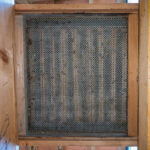Sprung Dance Floors are essential for dance studios and performance spaces, providing a responsive and forgiving surface that protects dancers from injuries and enhances their performance. The unique “springiness” of these floors is achieved through a layered construction, designed to absorb impact and return energy, allowing for better movement and reduced strain. Let’s delve into the construction of a sprung dance floor, layer by layer, to understand how this crucial element is built.
The foundation of a sprung dance floor begins with the subfloor, often concrete. To isolate the wood structure from the concrete and mitigate moisture concerns, the first layer is crucial.
Layer 1: Ramset Sleepers and Vapor Barrier
The initial step involves placing Ramset sleepers directly onto the concrete subfloor. These sleepers are typically attached using powder-activated Ramset nails, securely anchoring them to the concrete. An important feature of Ramset sleepers is their adjustable thickness. This adjustability is key to creating a consistent airspace beneath the sprung sleepers, allowing them the necessary space to flex and provide the desired “give” to the floor.
In this construction, a polyethylene vapor barrier was incorporated between the concrete and the wood lattice. This is a critical step, especially with new concrete subfloors which naturally retain moisture over time. Additionally, external moisture can migrate into the foundation’s soil. Without a vapor barrier, this moisture could potentially rise into the wood structure, leading to significant problems in humid environments. The vapor barrier acts as a protective shield, preventing moisture migration and safeguarding the integrity of the sprung floor system.
Layer 2: Sprung Sleepers – The Heart of the “Spring”
The next layer introduces the core component that defines a sprung dance floor: the sprung sleepers. These sleepers are the actual “springs” of the flooring system. Constructed from uniform pieces of wood, in this case, 5/8ths of an inch thick and 2 inches wide, these sleepers are designed to flex vertically as weight is applied to the floor above. The uniformity in thickness across all sprung sleepers ensures consistent and even flex throughout the entire dance floor surface.
Critically, these sprung sleepers are not directly anchored or fixed to the layers below. They “float” freely, resting on the Ramset sleepers. To prevent lateral movement or misalignment of these floating sprung sleepers, small alignment blocks are attached to the Ramset sleepers below. These blocks guide and stabilize the sprung sleepers, maintaining their correct positioning without restricting their vertical flexing capability. This floating design is fundamental to the sprung floor’s responsiveness and energy return.
When these initial three layers are assembled, the weight of the subsequent floor layers and dancers is distributed and supported across only one or two points within these layers at any given time. This engineered distribution of load is what allows the floor to react and “spring” under pressure.
In instances where longer runs of sprung sleepers are required, two sleepers are joined end-to-end. To reinforce these joints and prevent them from separating or sliding open under stress, sliding alignment blocks are strategically mounted. These blocks are fixed to the Ramset sleeper, positioned one Ramset sleeper back from the joint itself. The sliding blocks are secured using a combination of high-strength adhesive and staples. The staples provide immediate holding power while the adhesive cures and creates a permanent bond.
At the outer edges of the sprung sleeper system, sliding block mounts are also employed. Here, their purpose is to provide stability to the floating middle layer. These mounts ensure that the sprung boards remain correctly aligned at the perimeter of the floor, preventing them from shifting out of place, while still allowing for the essential movement and flex as the dance floor is used. This careful attention to detail at the edges maintains the overall performance and feel of the sprung floor across its entire surface.
By understanding the function of each layer, particularly the crucial role of the sprung sleepers and the methods used to control their movement, we can appreciate the engineering behind a quality sprung dance floor and its importance for dancers’ safety and performance.


